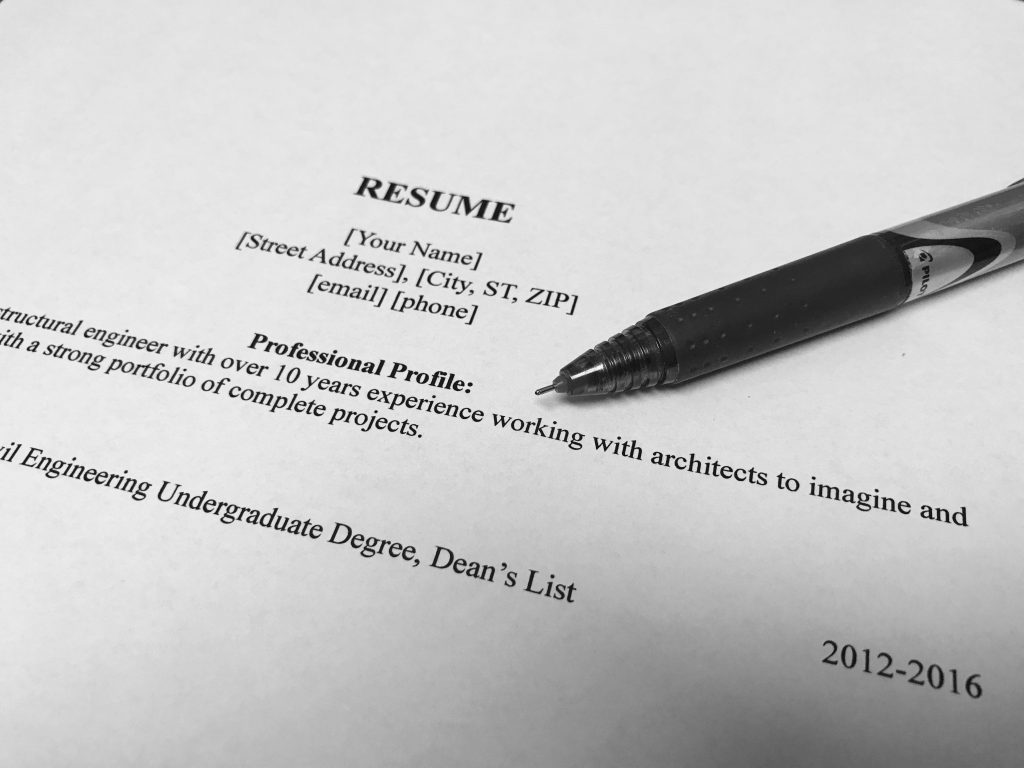Pitching Yourself, Part 2: Energize your Resume
Published on June 19, 2017

In a previous post, I wrote about your job application as an argument, and showed how we could use a rhetorical framework established by Stephen Toulmin to help your cover letters do a more effective job of connecting your evidence to the job requirements. In this post, I want to apply the ACR (Action-Context-Result) framework in order to best present that evidence in your resume.
As with cover letters, there’s a lot of advice about resumes and CVs floating around the internet – about layout, organization, content, etc. All of these things are important, but this post addresses a very specific aspect of resume writing: the composition of those bullet points describing each work, research or other types of relevant experience. Specifically, those bullet points should follow an (1) action, then (2) context, then (3) result pattern.
Privilege and Strengthen the Verb
Consistency in the rhetorical structure of these bullet points is important in a resume – parallelism allows readers to understand points more effectively, and to follow a pattern in reading about your experience and accomplishments. The most effective points start with an action word – the A of the ACR – identifying clearly what you did. But it’s not enough to simply start every point with a verb: what verb you choose has a significant impact on a reader’s understanding of your experience and accomplishments. Take for example, the following points:
- Collaborated in a team of five to design …
- Participated in negotiations with …
- Facilitated communication between management and workers …
- Explored the strength of steel, aluminum, and composites in …
- Learned to use Total Station to assess and map …
All of these points start with a verb, but in each case, the chosen verb is a weak one that doesn’t position the real action of the bullet point in its most effective position: the first word. In fact, in those sentences, many of those real actions are hidden in other parts of speech. Can you identify what words in the previous bullet points hold the real action?
Let’s walk through each of these individually. The first two are pretty straightforward:
- Collaborated in a team of five to design … Designed
- Participated in negotiations with… Negotiated
- Facilitated communication between management and workers … This one’s a bit harder, since the communication isn’t the main action of the sentence, but I’d argue you can capture that more accurately with a different verb. Mediated?
- Explored the strength of steel, aluminum, and composites in … Again, this one doesn’t have the real action as the verb, and we need to change the verb to something more accurate… Tested?
- Learned to use TotalStation to assess … This one’s a bit more difficult, but unless you really want people to know you “learned” here, then it’s possibly “Assessed … using TotalStation,” or if you really want to forefront your ability to use a particular type of device, “Used Total Station to assess …”
These changes forefront the real action in the experience, usually removing a few unnecessary words, and help to make your resume more concise in the process.
Provide Context Next
Now what? You’ve provided a strong verb identifying what you did, but in order to explain the significance of the task to your experience, you likely need to provide context. Context can involve all sorts of information – including the who, what, where, when, and how (the why goes somewhere else). Many of the above examples already include part of the relevant context information, but not all …
- Designed, prototyped, machined, and tested, alongside five team members, machined tools for Boeing XXX seat assembly and installation (with whom; what; for what reason – I’ve added more verbs here since the experience involved more than a single action)
- Negotiated new terms of purchase order between client and company during dispute over terms of delivery (what; between who; when)
- Mediated settlement between management and day shift workers over benefits, breaks, and payments (what; between who; about what)
- Tested steel, aluminum, and composite materials for strength and weight (what for?)
- Assessed highway curves using Total Station (what?)
End with Result
By identifying an action and putting it in the right place, and then putting it in context, you’re making a strong point for your experiences in your resume. But these points get even stronger when there’s a clear and (if possible) quantifiable result that can be associated with your actions in that role. Consider: (1) what did your work accomplish, (2) what answers did it provide, or (3) what problems did it solve (to what degree) in completing the points on your resume. In the above examples, we can add these results to further strengthen the descriptions of your experiences:
- Designed, prototyped, machined, and tested, alongside five team members, tools for Boeing XXX seat assembly and installation to be deployed in 2017
- Negotiated new terms of purchase order between client and company during dispute over terms of delivery, resulting in revised, renewed terms for $2M/year contract
- Mediated settlement between management and day shift workers over benefits, breaks, and payments, laying important groundwork for new four year contract
- Tested steel, aluminum, and composite materials for strength and weight, leading to the choice of aluminum as frame material for Product X
- Assessed highway curves using Total Station, producing complete surveying data for specified locations
Summary
The points describing your experience help shape the evidence supporting the claim that you’re a strong candidate for the position. Using the ACR model, as shown above, to structure those points ensures that your experience is cast in the strongest, most informative, and detailed light.

